The reconstruction and revival of the monastic life today is, as always, based on the renewed practice of the eucharistic and hesychastic life in the parishes, and the monasteries (it is the fruit of repentance of the people).
The Tradition about the Jesus prayer in Macedonia and in Matka is an inseparable part, never ceasing, from the apostolic times until today. And although we know that the flame of the Jesus Prayer constantly burned in the hearts of the prayerful hesychasts, in the heart of the living Tradition of the Holy Fathers, in certain moments it was intensely burning.
We will follow exactly the continuity of the ascetical-hesychastic Tradition in Matka and in Macedonia, through these figures, these lights, that were willing to deny themselves and, sacrifice themselves for God and their fellow men. They testified and preached about Christ in this territory, they were burning in order to glow even today.
From this period, there is almost no documentation about the monks in the monastery, nor in the archives of Skopje and Macedonia, nor in the Skopje Eparchy.
The records that we will examine are mostly from notes left on the books in the monastery library, and orally transmitted memories of some of the older residents of Matka.
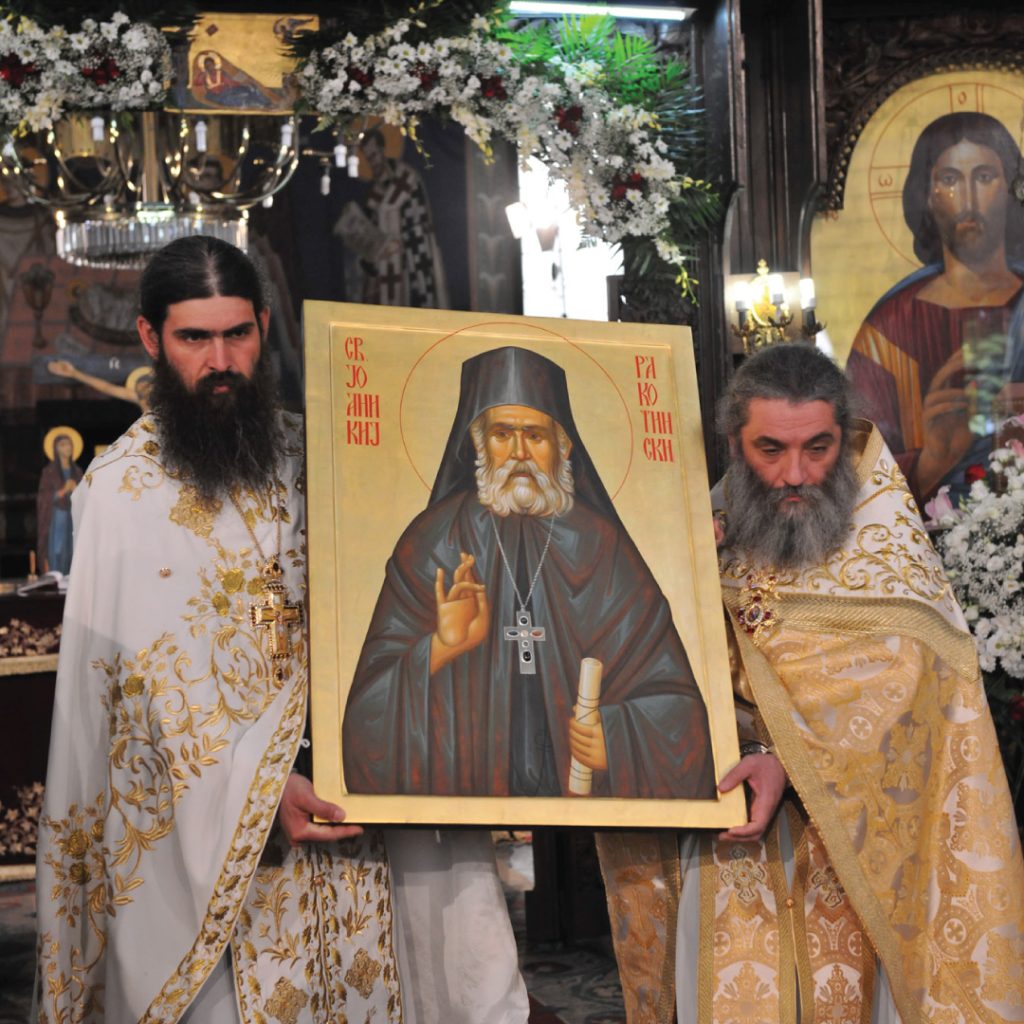
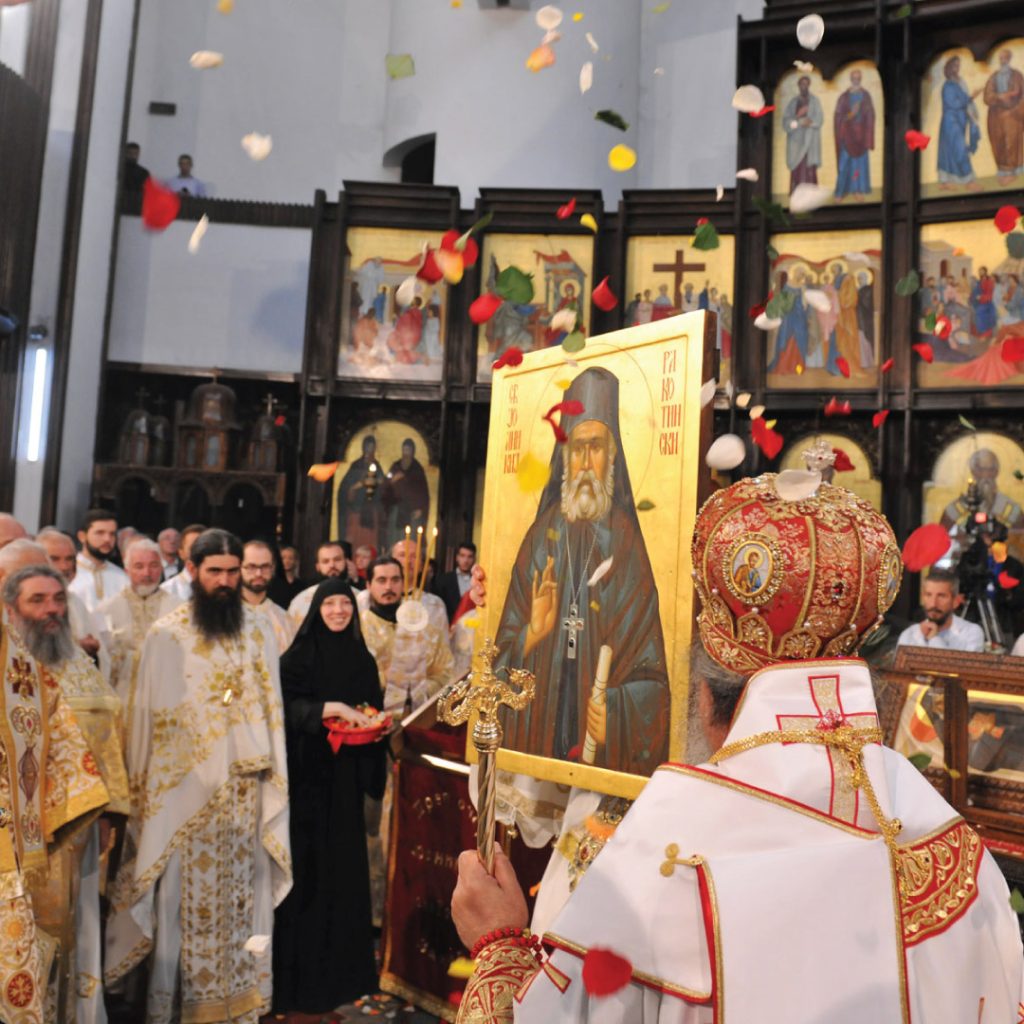
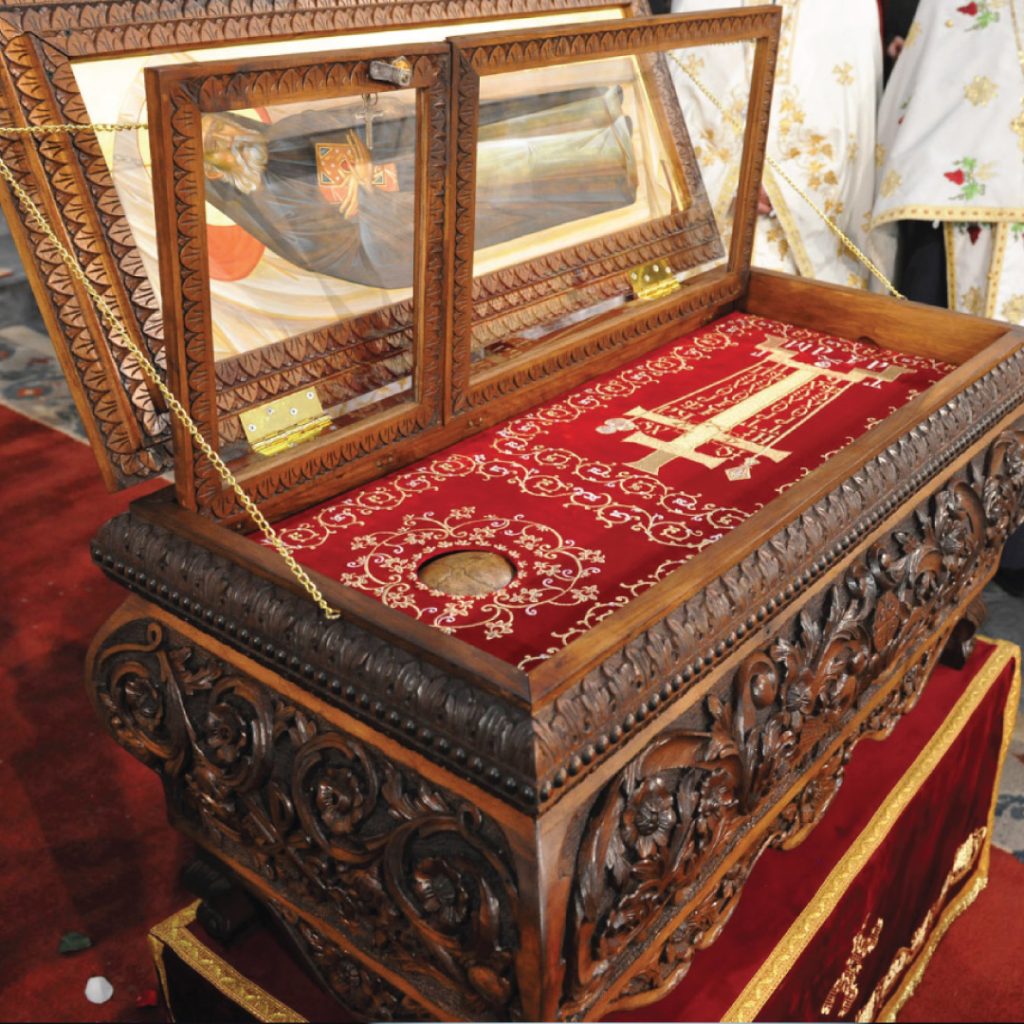
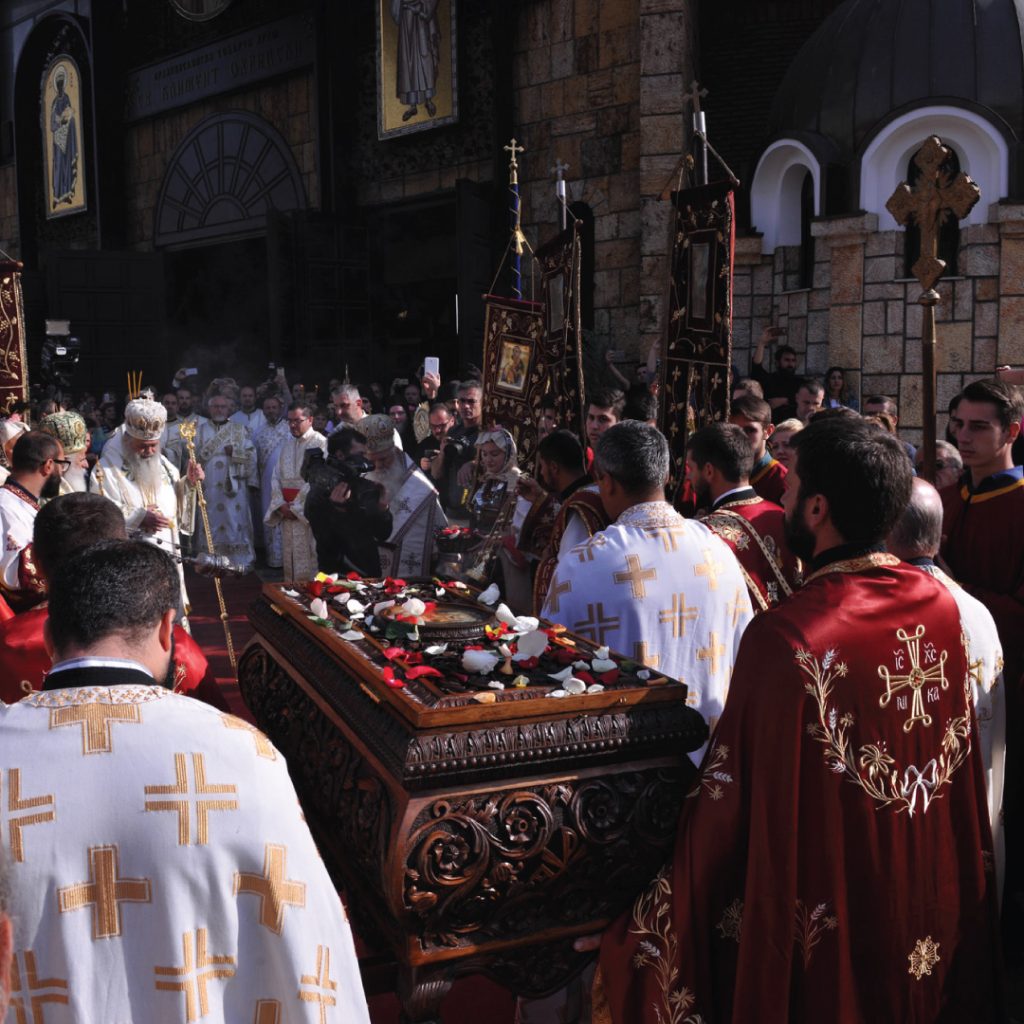
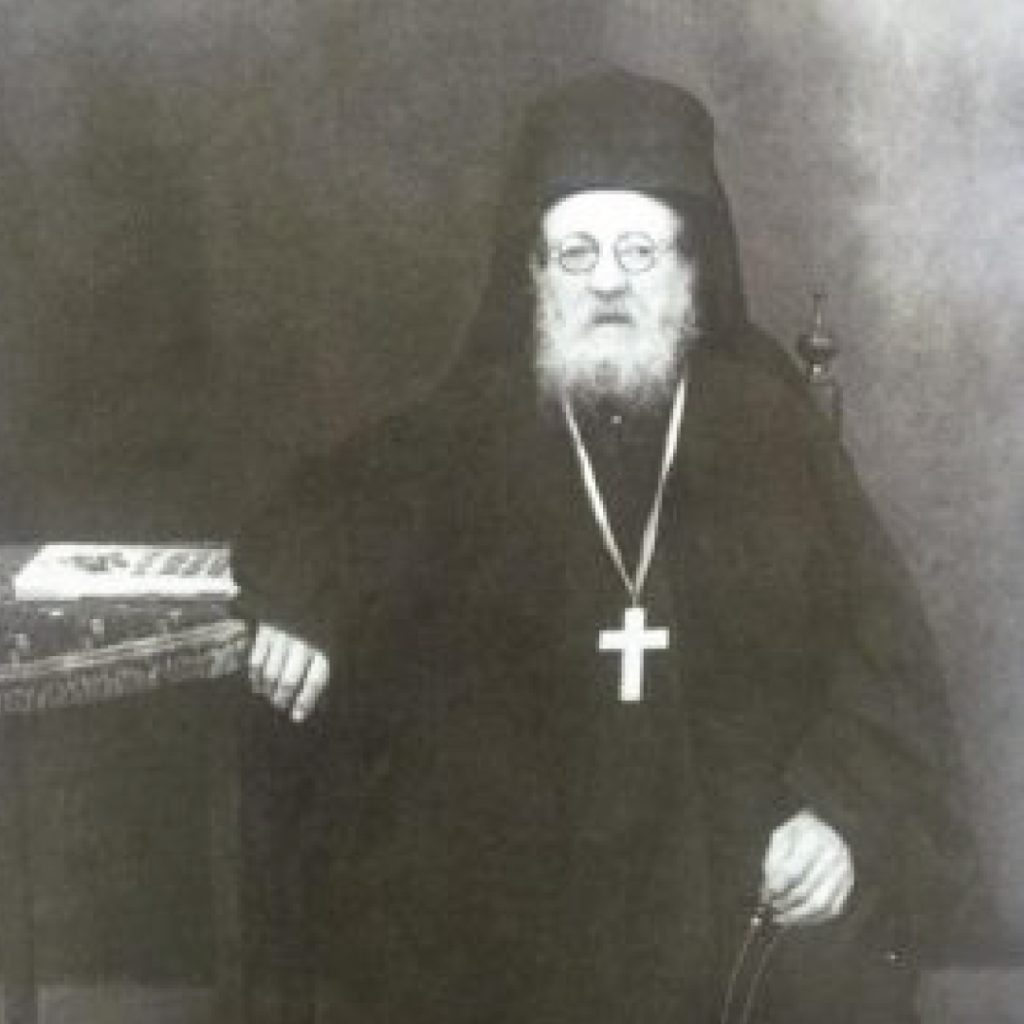
Saint Ioanikij Rakotinski
In 1912, the Abbot was the Hieromonk Peter Tirev.
The Minei, which today are used in worship, it should be noted, have been left in legacy to the library of the monastery by Hieromonk Simon Petkovich who died on 7th of June, 1914. His brother, and prior of the monastery, was Hieromonk Teophil.
The library of the monastery Matka, today contains mainly liturgical books, on which are left records, receipts, and official newspapers of the time of the Bishop Barnabas from Skopje.
Metropolitan Varnava is said to have been particularly fond of the monastic life. He was a spiritual child of the saint at that time – the Venerable Ioanikij Rakotinski.
There is an inscription in one of the books, by St. Ioanikij …
Venerable Joanikij was born in Ohrid, on January 7, 1847, and was baptized John. He became a monk on January 17, 1873, in the monastery “St. Martyr. Panteleimon “, Nerezi, with the name Ioannikij. A year and a half after, he moved to the monastery “St. Elijah”, village Banjani, and in 1874 he remained in the fraternity of St. Mark’s monastery, to finally settle in the village Rakotinci and to renew the monastery “St. Elijah”. As the most educated at that time, in 1896 he built a primary school for children. He lived in extremely difficult times, during the Turkish rule, the Balkans and the First World War, with severe trials and pressures, and national suffering. In 1913 he was made abbot, and in 1935 archimandrite. He died on January 24, 1940. (source MOC – OA)
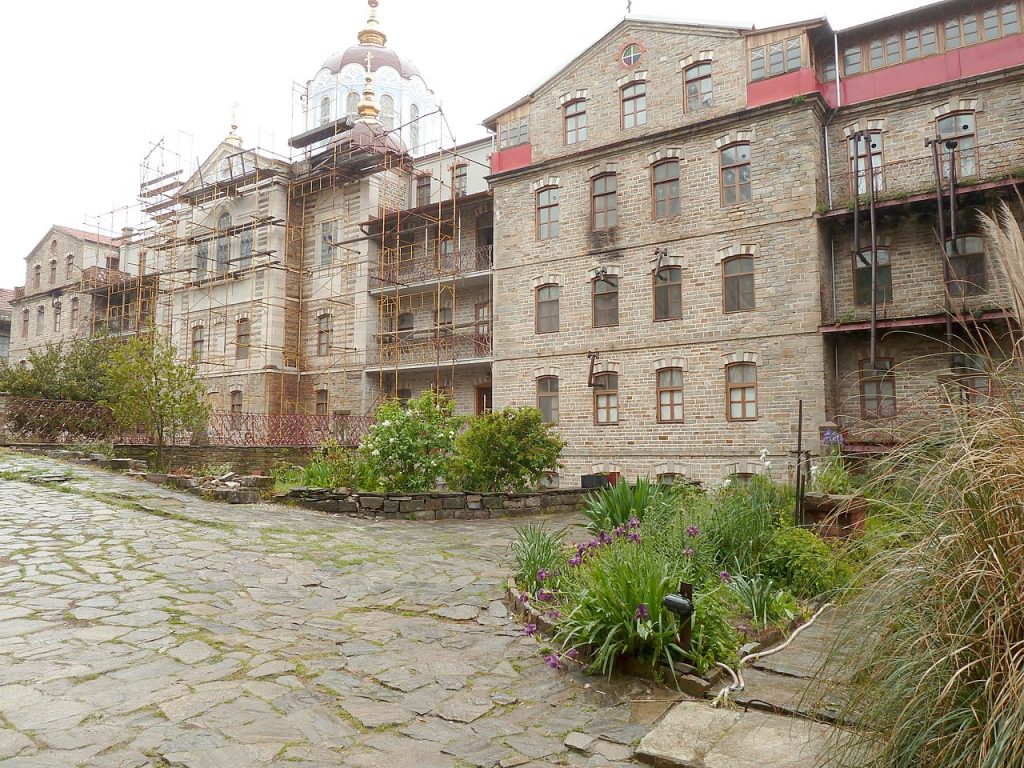
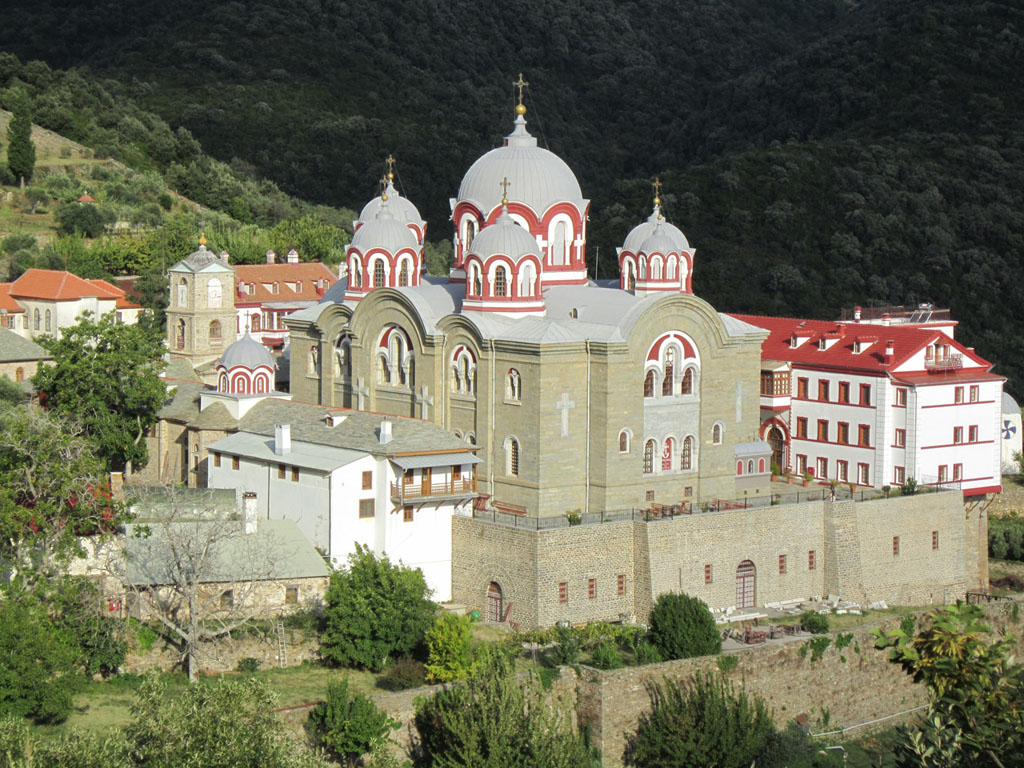
The russian monks
Some of the entries, directed us to look up the Russian monks who lived here, and who left in legacy the books “The ladder” and “The service of St. Sergej Voronjeshki”, which bear the seals of the Athonite Russian Skete of St. Andrew and St. Elias (founded by the Venerable Paisius Velichkovsky), from the monasteries in Hopovo and Kuvezhdin, as well as the Valaam Monastery.
In one record of Tihomir Jančovski, in his book “Monasticism in Macedonia” *5 describes the conditions in which at the time of the Metropolitan Barnabas (otherwise spiritual child of the venerable Joanikij Rakotinski), about 250 Russian clergy, monks and priests were accepted into the Skopje Eparchy.
“The monks and nuns from Russia, after World War II, remained in the monasteries in Macedonia, the majority of whom came here as part of the so-called White emigration, i.e. the first waves of refugees that followed the October Revolution. Aside from these few, the Russian monasticism on the territory of the Republic Macedonia in the twentieth century, constituted of two other important groups: the monks from the Valaam Monastery who were expelled for not accepting the new calendar, and the Russian monks from Mount Athos, that in the 20’s and 30’s of the 20th century left the Holy Mountain and came to Macedonia. Besides the migration of monks (from the Vallam monastery, or from the Holy Mountain or belogardejci – bela garda – white movement) and nuns, it is important to note that a number of Russian laymen decided to enter into a monastery in Macedonia.”
The Russian priests and monks in the Kingdom belonged under the jurisdiction of the Russian Orthodox Church Outside of Russia (RZPC), which was established in 1921 in Sremski Karlovci, and this city remained the seat of the Outside of Russia Synod until 1945. Along with the Karlovo jurisdiction, many Russian clergy in Macedonia received canonical reception in the three Macedonian dioceses within the United Serbian church. At the outset of the war, the high clergy of the Serbian Orthodox Church withdrew from Macedonia. The jurisdiction of RZPC continued throughout the war until 1945, when the headquarters of the outside of Russia synod was moved from Karlovci to New York. The Russian clergy and monastics that were under the jurisdiction of RZPC, and remained in Yugoslavia after the Second World War, requested admission to the local dioceses. The Russian monks and nuns who remained in the monasteries after 1945, have accepted the jurisdiction of the Macedonian church authorities.
After the Bolshevik revolution and the victory of the Red Army over the white, the first refugee wave of about 80,000 Russians, found refuge in the Kingdom of SCS, in whose boundaries then belonged the area of Vardar, Macedonia. From the Government was arranged an assistance, where refugees were housed in dozens of centres, which later were established as the first Russian colonies. There were two such colonies in Macedonia, in Skopje and Bitola. At that time, the new unified Serbian church felt a enormous shortage of clerical staff and monks. The highest dignitaries of the SPC were former students of Russian spiritual academies and as such, were positively inclined to acceptance of the hundreds of Russian priests and monks who had begun to enquire. During the First World War, it is believed that the losses of the Serbian Church were more than a thousand priests and monks, which accounted for one third of the active Serb clergy before the war. In the dioceses on the Macedonian territory, there were two major Russophiles; the bishops Barnabas (Rosikj) and Nikolai (Velimirovic) and their exact dioceses in Macedonia became the nurseries of Russian monasticism throughout the Kingdom.
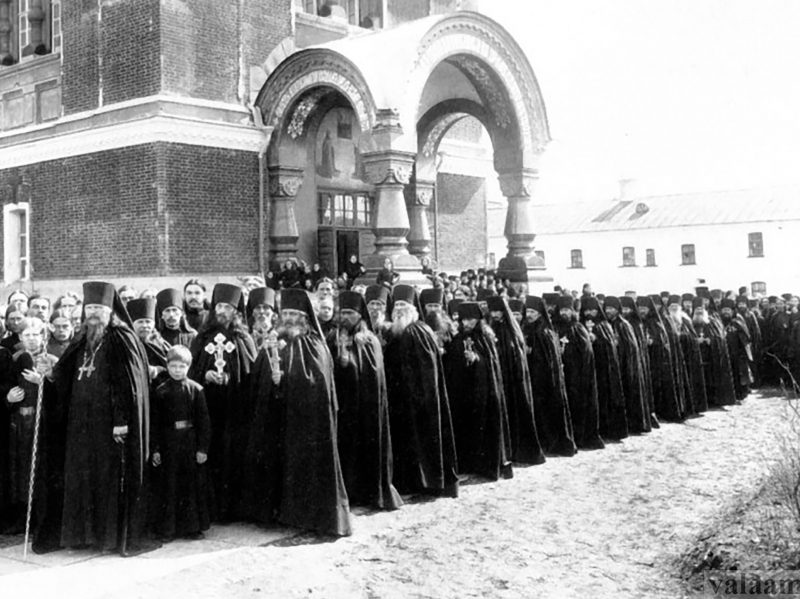
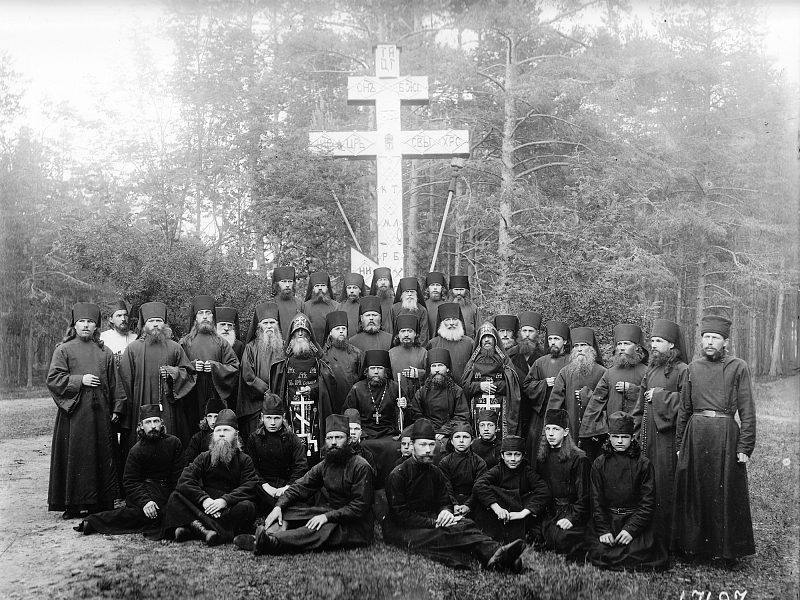
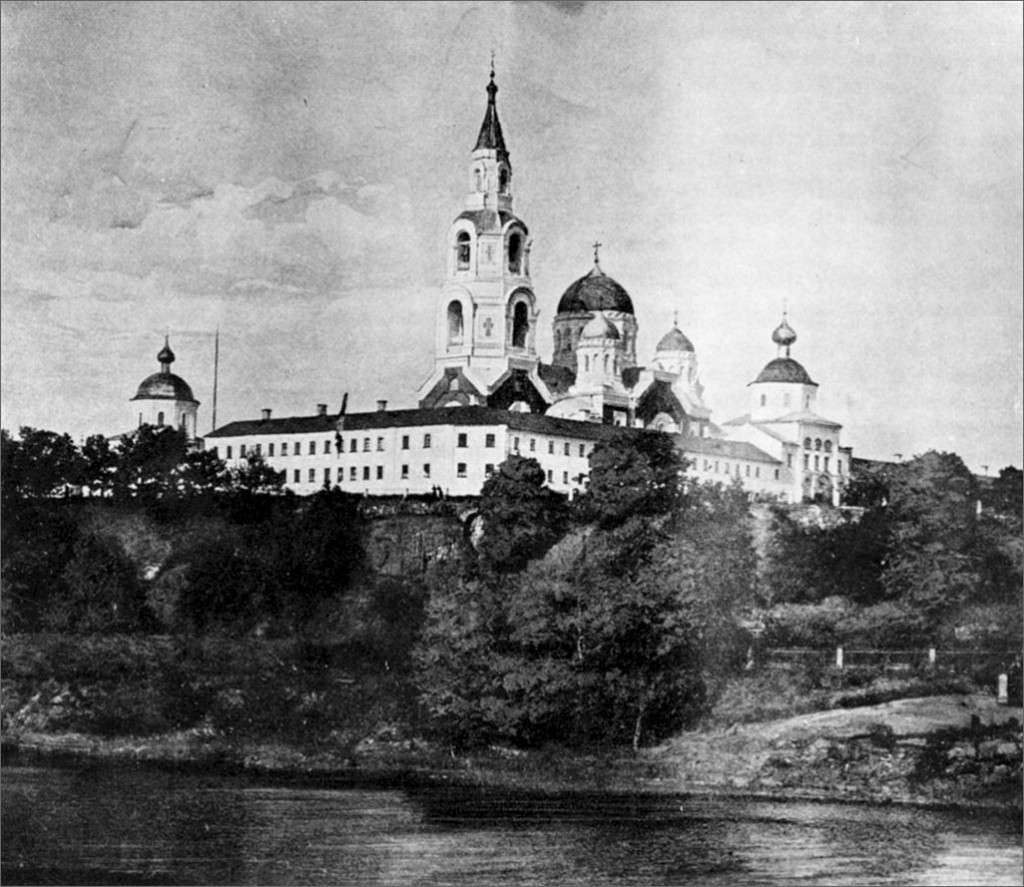
Abbots Agej, Seraphim and Naum
In the Macedonian monasteries, between the two world wars, came and stayed, and thus left or remained more than a hundred Russian monks and nuns.
The abbot of Matka Monastery from 1928 to 1933, was the Hieromonk Agej(Haggai). His known brother-monks were the hierodeacon Nil (Neal) and the two monks from Valaam, who moved to the monastery in 1926 from the monastery in the village Lesok. The Hieromonk Agej remained in Macedonia after the Second World War, in the monastery of St. Panteleimon, until his death.
A meeting with the abbot Agej was described by the British journalist and author Rebecca West, in her journal “Black Lamb and Grey Falcon” – “… for me he was one of the dearest people I met in Yugoslavia. He is a little creature that knows of no sin. His eyes, whose brilliance emerges under his thick eyebrows, the wrinkles on the face and beard, they are not bright, but they are a real light … When asked whether he feels lonely, he said: Mostly I’m not, because God is always here. “
From the Russian monks here during the Second World War, the elder was monk Seraphim, who became ill and died here.
In the period after the Second World War (in 1948) the elder of the Monastery was Hieromonk Naum, with the brothers-monks Maximilian and Arsenij. Those in the monastery were mainly looking after the sick and wounded who were brought here from Aegean Macedonia; above the monastery were the graves of the dead soldiers, separate from those of the monastics which were around the church – it was all grave stones around it; they used to take groceries from the monastery from Shishevo, where, a monk was growing them.
Today, there isn’t a single grave or tombstone near the church. The military graves above the monastery, although completely overgrown, can still be recognised through the densely grown hazel trees.
Records about this brotherhood can be found in the account book (income-expenditure) that was used in 1948. Here we found the exact names and ranks of the monks, and the great expenditures for medicine drugs listed on virtually every page.
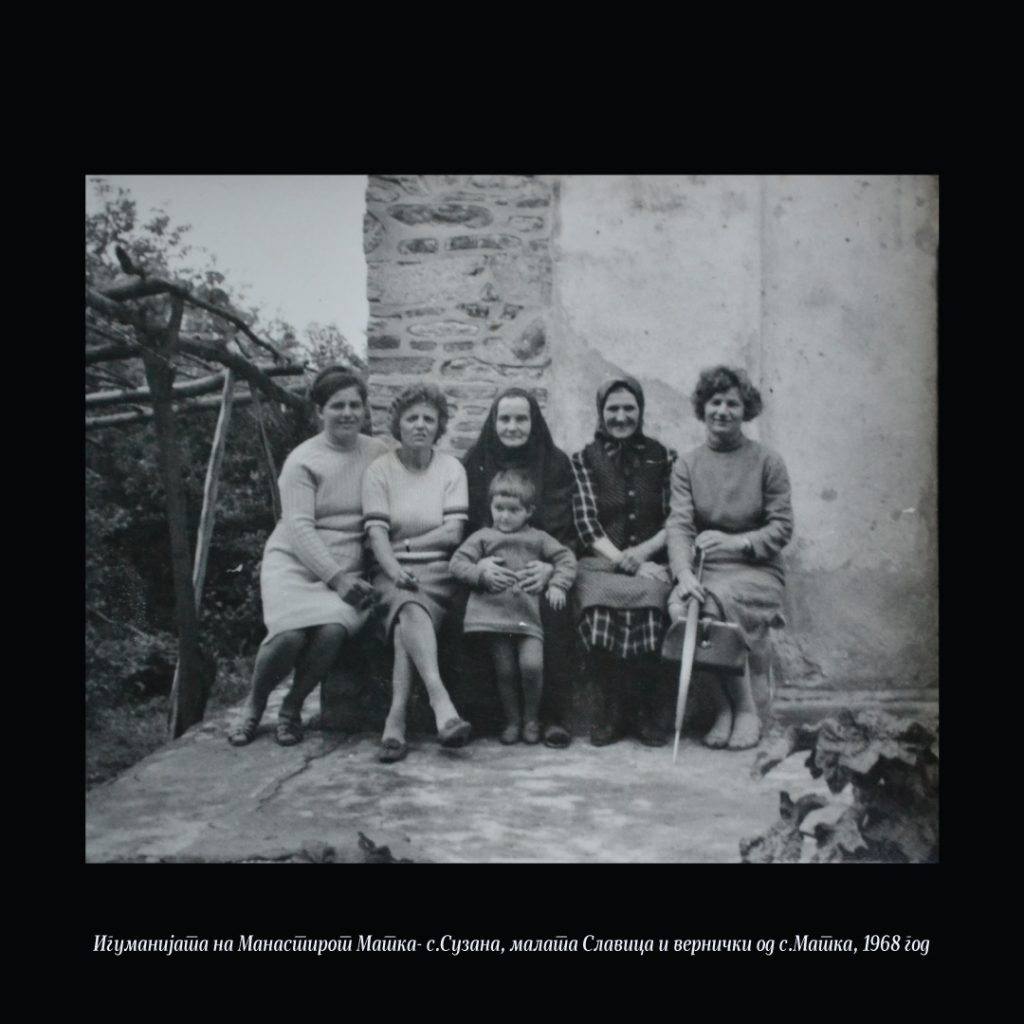
Sisterhoods from the monasteries Kuvezhdin and Hopovo
For how long the brotherhood was here, and exactly when the monastery became a convent, is not known. It is only known that in the sixties, the Abbess was a nun called Susanna, and her three fellow nuns were Evgenia (formerly from the Monastery Kuvezhdin), Seraphima, and Ilarija (from Hopovo). Kuvezhdin and Hopovo are two monasteries in the Fruska Forest in Serbia, where several sisterhoods from Russia were received, and whose spiritual father was the last Elder Ambrose from the Optina monastery, in whose honour the Fruska Forest is called “Holy Fruska Forest”.
Nun Suzana in the memory of the inhabitants of Matka .. She was under great pressure, from individuals in power at the time, to alienate the property of the monastery almost without compensation. The villagers when she was left alone – often sent a child to spend the night here. The only photo of her is from the personal album of one of those children. They all remember her well, and during meetings with us, they regularly ask us if we know where she died. In the library of the monastery there is only one correspondence with her …
From the period of the sisterhood, there are more collections, magazines from the monasteries from which they came, also books.
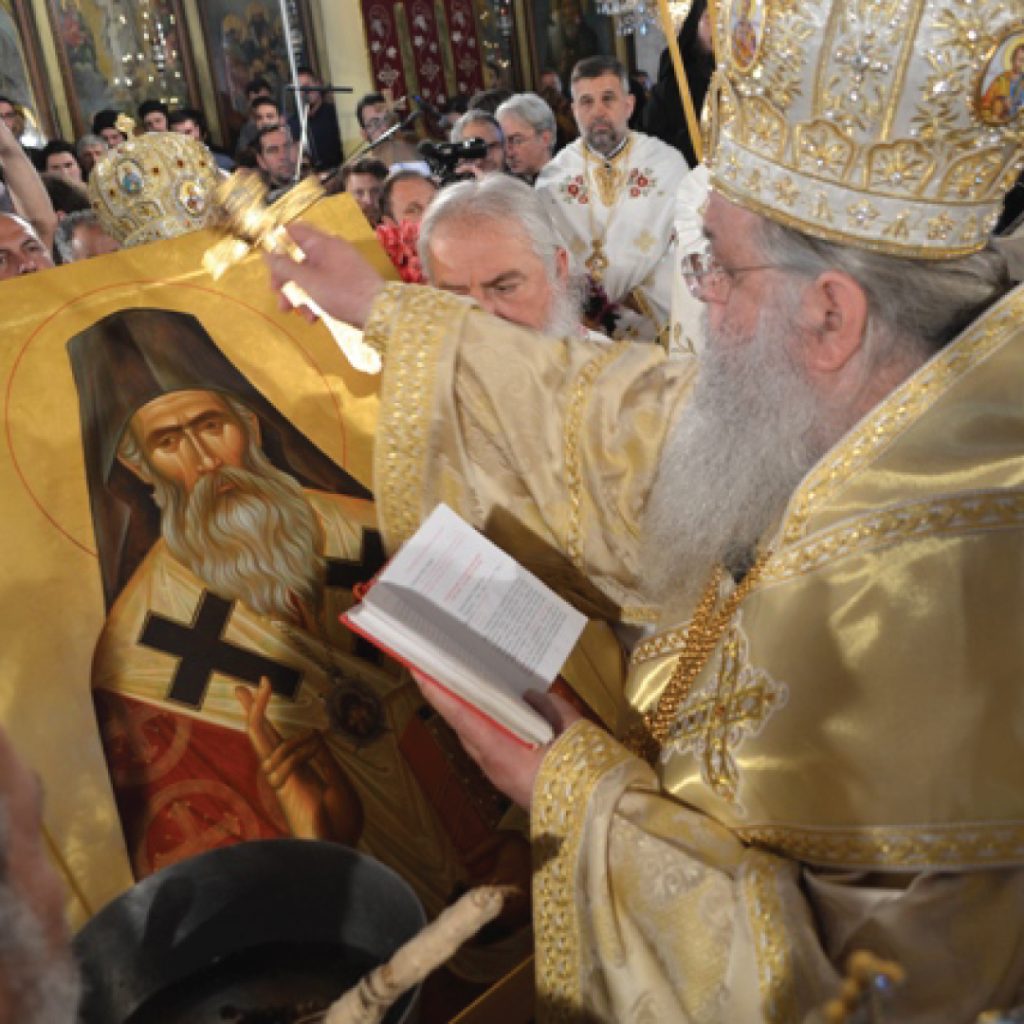
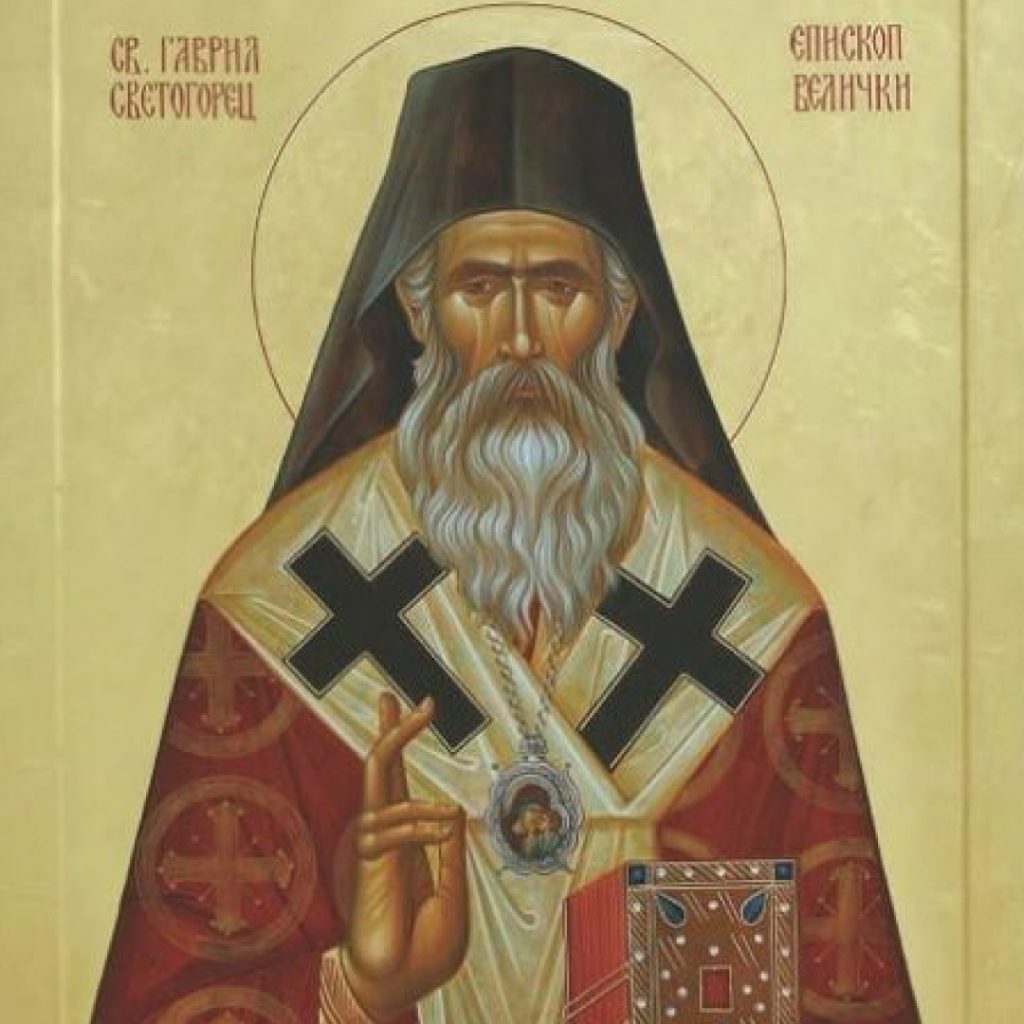
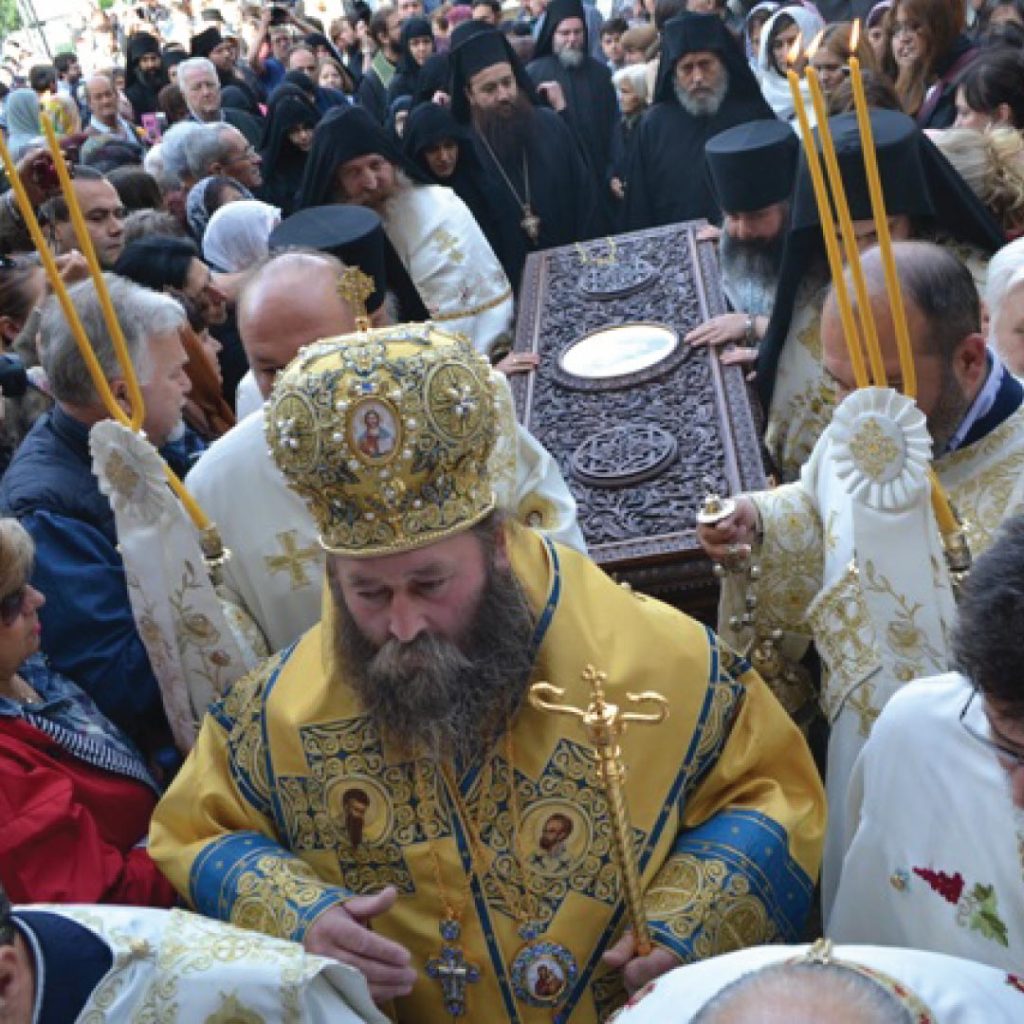
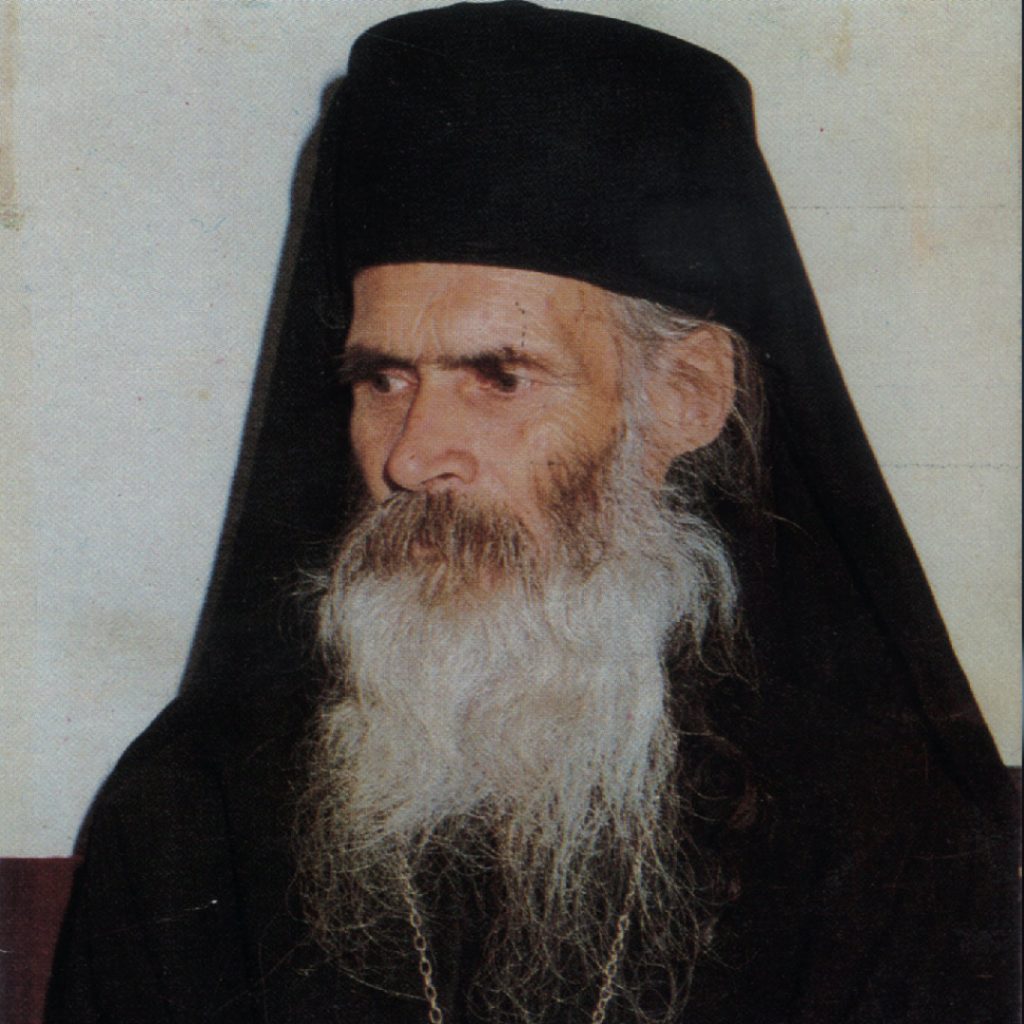
Saint Gavril Hagiorite,Velichki Bishop
In this monastery, in their own time, stayed the Velichki Bishop Gabriel Hagiorite and his father, the monk Cyril (1972-74). In their brief stay of 2 years before leaving for Lesnovo monastery, Father Gabriel generally lived and struggled in the caves and mountains of Matka, coming to the monastery only for Sunday worship. His father, who regularly stayed there and maintained the monastery, was counted worthy to see the tears of the miraculous icon of the Most Holy Theotokos, which is now placed on the left side of the church, which back then was part of the iconostasis. Venerable Gabriel while staying at Matka was a student on the Faculty of Theology.
About him, Tihomir Jančovski writes: “As it often happens, that in times of major crises comes the time of great people, who with their personalities can keep the balance.” He is a Saint among the Macedonian monks of the restored Macedonian Orthodox Church- of the Ohrid Archidiocese.
Mijalce (later Gavril of Mount Athos, Bishop of Velika) was born on March 10, 1926, in Stip, to Orthodox parents Metodij (later monk Kiril) and Gora Parnadzievi. He completed his primary education and then high school in his hometown. Ever since he was young, he had a special meekness and obedience. He then enrolled at the Academy of Fine Arts in Belgrade. After graduating, in 1955, he worked for four or five years as a professor of art and art history in the high school and the teaching school “Goce Delchev” in Stip. In addition to working at the school, Mijalce, together with his father Methodius, also worked as a sculptor. In 1963 he went to Mount Athos. For his stay there he received a direct blessing from the Abbess of Mount Athos – the Most Holy Mother of God. He became monk in the Greek monastery “St. Paul the Apostle” with the monastic name of Gabriel. During his stay on Mount Athos, he avoided contact with people. However, his stay there did not last long; he had to return to his native country. He never rested his body – he almost never slept, and when he did, he was always lying on the ground or on a hard mat. Although he fasted very strictly and was very weak, he possessed great vitality and energy. He regularly served all the services in the monastery and constantly endeavoring in the struggle of the mind-and-heart prayer. Silence and solitude were his constant co-journers, therefore he often used the two nearby caves. From God he got the gift of sagaciousness and wonderworking. In 1981, From the Synod of MPC he was promoted to the archimandrite rank on August 28th, on the feast of the Dormition of the Most Holy Mother of God, and exactly one year later he was ordained the rank of a bishop with the title Velichki. Although he has always longed for and resorted to silence, he obediently accepted to be ordained a bishop. He foresaw his near death and served forty Liturgies himself. On 12-th of January, he peacefully gave his soul into God’s hands, while praying. He had his gospel, that he read constantly, and the cross on his chest and the praying rope in his hand. He was buried behind the altar part of the monastery beside his bodily father and spiritual son, monk Kiril.
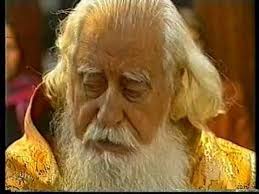
Archbishop Gabriel. Archbishop Michael
The monastery is actually an Archbishop’s residence. It is kept as stavropigial. The 1936 building, originally built as a police station, was used as a residence. For many years, the blessed deceased Archbishop of Ohrid and Macedonia – Gabriel – often stayed here.
A resident monk of this monastery, was the blessed Archbishop of Ohrid and Macedonia, Mr Mihail (Michael), who is said to have worked here in peace. In his lifetime, was revived the monasticism in Macedonia. Macedonian Monks were summoned, from Mount Athos who initiated the establishment of monastic communities in the monasteries. The ascetic-hesychastic Tradition again is transferred from Mount Athos to Macedonia. Matka once again has its population of monks. In 1998, in the Monastery of the Dormition of the Most Holy Theotokos – Matka, the monastic life is renewed in the form of a female monastery, whose abbess is the nun Perpetua.
During this period, the monastic journey from a monk to a bishop, in the monastery of Matka, was passed by today’s bishop and Metropolitan of the Povardarie, monk Agatangel.
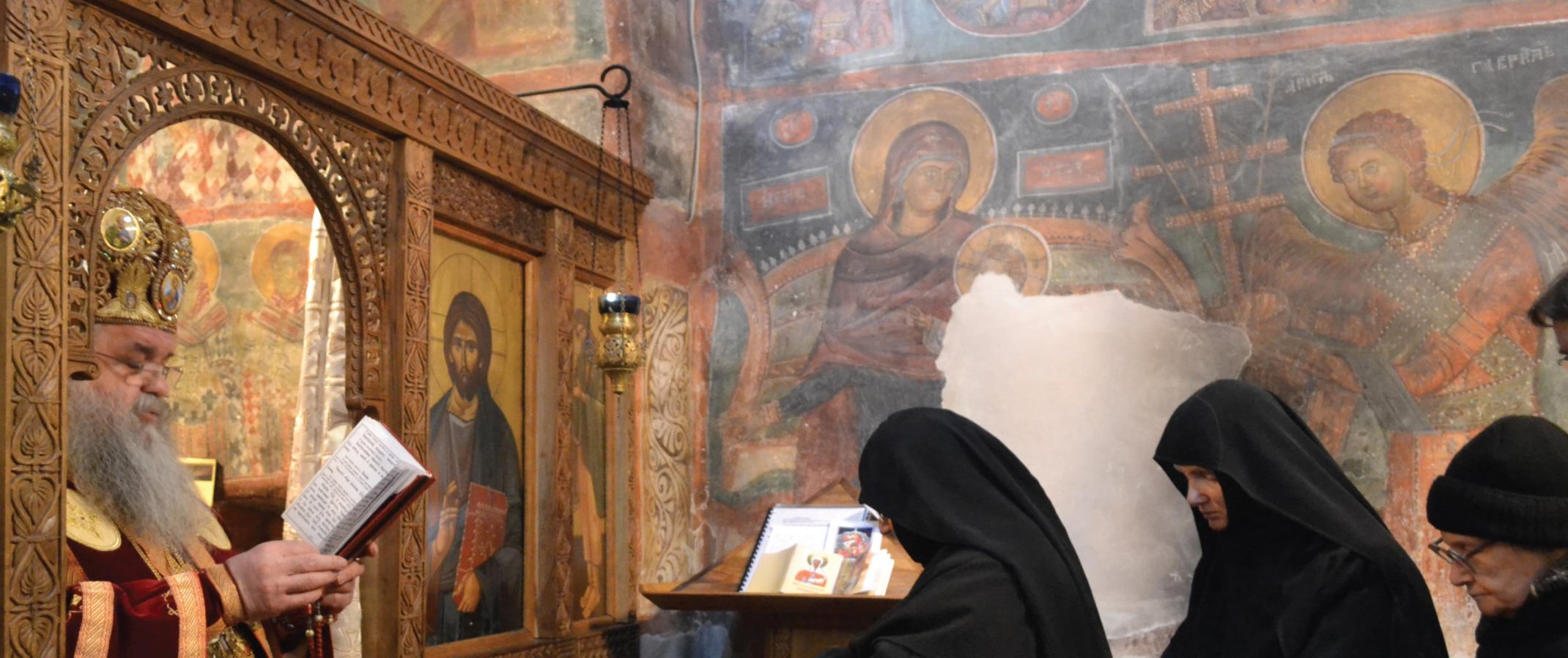
Archbishop Stefan. Sisterhood.
The sisterhood, which has been in the monastery since 1998 and whose number varied from three to seven sisters, today has five sisters and is under the blessing of Archbishop Stefan.
Part of this sisterhood was presented to God. Sister Nina (2016) and Sister Anastasia (2018) passed away.
The abbess of the monastery of St. John the Baptist – Kapishtec, mother Voskresija(2020), rests here and is buried here at her request. May God remember them, and by their prayers, remember us all.
